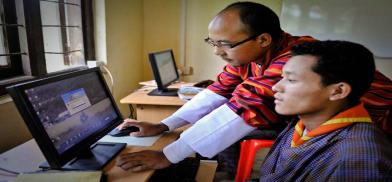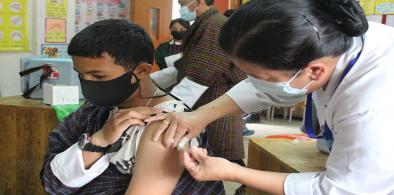Bhutan on track to graduate from LDC to middle-income country
Bhutan is on the track to graduate from the club of Least Developed Countries (LDCs) in 2023, according to the UN’s Committee for Development Policy (CDP), despite COVID pandemic

Bhutan is on the track to graduate from the club of Least Developed Countries (LDCs) in 2023, according to the UN’s Committee for Development Policy (CDP), despite COVID pandemic.
The CDP - which provides independent advice on issues critical to the international development agenda and is responsible for the review of the LDC category - had held its plenary meeting from February 22 to 26 to review the progress of LDCs, including Bhutan, according to Kuensel newspaper.
The CDP’s LDC Monitoring Report 2021 states that Bhutan will be graduating in 2023, coinciding with the end of the 12th Plan.
It adds that the country is “making good progress in preparing for a smooth transition strategy and plans for appropriate actions to address challenges posed by the LDC graduation and the impacts of the COVID-19.”
Bhutan is the only country to submit its report on the preparation of the smooth transition from the LDC category to a middle-income country, the newspaper said. The CDP reviews the list of LDCs and makes recommendations for inclusion in and graduation from the category every three years.
The report said that Bhutan’s graduation was sustainable and irreversible.
The Bhutanese government had earlier urged the UN to reset Bhutan’s LDC graduation path to help the country regain its grip on a smooth transition from the LDC category due to the COVID-19.
Foreign Minister Tandi Dorji said that nothing was “confirmed” yet. “From the government’s side, it is as it is,” he was quoted.
The graduation thresholds must be met for any two of the three criteria -Gross National Income (GNI) per capita, Human Assets Index (HAI) and Economic Vulnerability Index (EVI) - in two consecutive triennial reviews.
According to the CDP’s report, Bhutan’s GNI per capita is estimated at USD 2,982 in 2021, which is almost three times the graduation threshold of USD 1,222.
The country’s current HAI score (index of education and health used as an identification criterion for LDCs) is estimated at 79.4, which is above the required score of 66. The EVI is now 25.7, which is well below the graduation threshold of 32.
As per the CDP’s recommendations, the graduation of Bangladesh, Nepal and Laos would be effective in 2026. This means that Bhutan will graduate three years ahead of the three countries, the newspaper said.
The report states that challenges to a smooth transition from LDC status include the mobilisation of domestic resources and prudent management of hydropower revenues to substitute for declining foreign grants and maintain macroeconomic stability.
The report stated that Bhutan’s smooth transition strategy is expected to accord special consideration to the challenges that pose a potential hindrance to Bhutan reducing its economic vulnerabilities and adjusting to the loss of LDC-associated benefits.
It says that for the future, priority areas are an investment in transport and ICT infrastructure.
The focus, therefore, is on improving productive capacity, building the economy’s resilience and meeting the last mile challenges in areas of poverty, health and education.
In view of this, the flagship programmes will play a strategic role in complementing sustainable graduation from the LDC category, the report states.
LDCs have exclusive access to certain international support measures, in particular, in the areas of development assistance and trade. Generally, the country also loses foreign grant aids and technical assistance that are linked to LDC status.
However, graduating from LDC indicates that the country is doing well with a stable political and social setting. It would also mean attracting foreign direct investment (FDI). It will also help the country to attract international investors, leading to increased access to international private finance for both the public and private sectors.
















Post a Comment